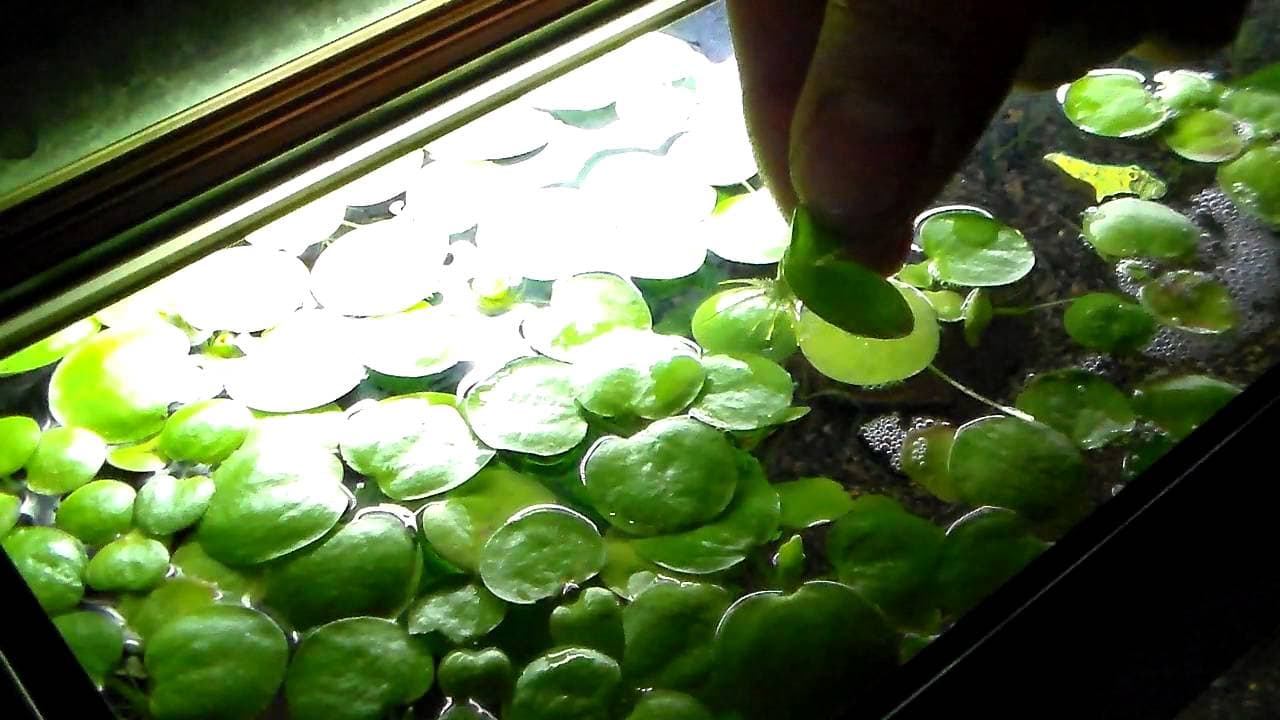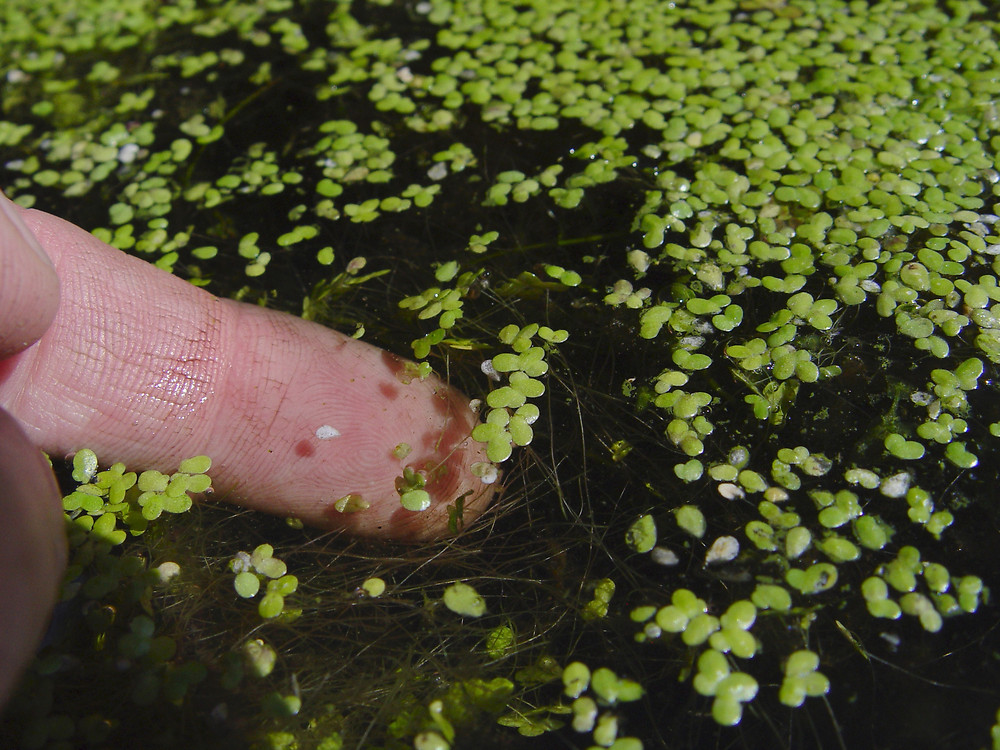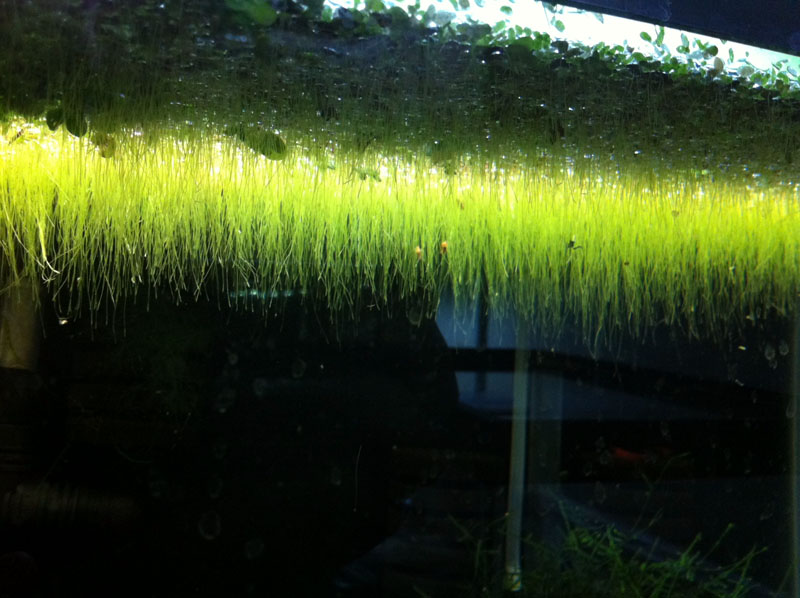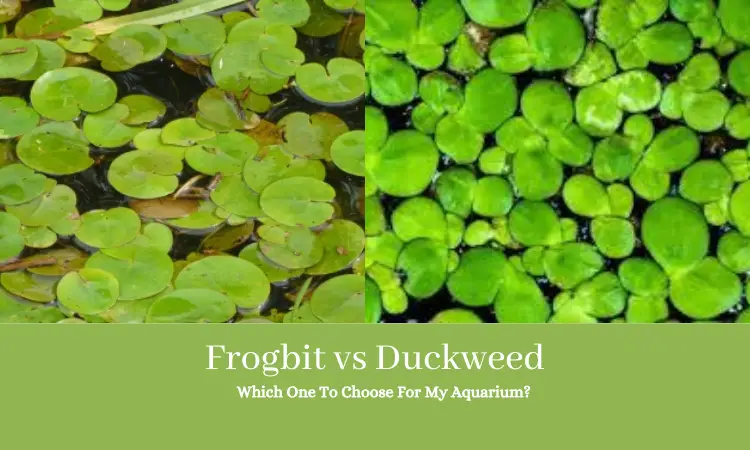Thinking of adding floating plants but facing trouble choosing the perfect one? Don’t worry, we’ll assist you to choose the best one for your tank.
So, which one to choose, frogbit vs duckweed?
Well, both frogbit and duckweed provide shade for underwater plants and betta fish. They absorb excess nutrients, produce oxygen, and keep the water clean. However, Frogbits have long roots and are aesthetically pleasing. On the other hand, duckweed is a good source of protein for fish and shrimp.
This is just a small preview of our entire segment. For more in-depth knowledge about both of these plants let’s get into the root of it!
Frogbit vs Duckweed: Quick Comparison
Frogbits and duckweeds both are great ornamental plants. They supply ample oxygen for the fish in the aquarium. But you might want to know which one’s good for what type of aquarium.
So, is Frogbit good for aquarium?
Well, yes frogbits are great for aquariums with small fish. This is because they float on the surface. This gives the fish plenty of room to hide under the shade.
Duckweeds too provide shade for betta fishes as well. You can see this type of comparison when root tab and liquid fertilizers are compared. Because all of they also serve the same purpose but there are some differences.
So, where’s the difference then, you ask? Well here’s a comparison to help you have an outlook on it.
However, if you need some more feature comparison then go through the following chart:

This was just a quick glance for you to have an overview. Now, on to the details we go! But again if you are in short of time you can directly jump into our recommendation section and make a decision.
Frogbit vs Duckweed: Detailed Comparison

Source: https://theaquariumguide.com/
In this segment, we’ll pit their features one with the other to see which one stands out. This head-to-head comparison will help you to see which plant fits your criteria.
Tank Size
Tank size is an important aspect to consider while choosing your ideal floating plant. Each plant has a minimum space requirement to grow properly.
Frogbit
If you want to grow frogbits, you need a tank that can hold at least 20 gallons of water. You’ll also need to ensure proper lighting of this 20 gallon tank for the perfect growth. So, what is the ideal size of a frogbit fish tank?
The ideal tank size is about 24”x12”x16” to cultivate frogbits. This is the minimum requirement for the plants and fishes to cohabit freely.
Duckweed

Source: https://www.myaquariumclub.com/
Quiet similarly like a frogbit fish tank, a duckweed fish tank needs to be at least 20 gallons or more. The minimum dimension should be 20”x10”12”.
Bigger tanks are better for these floating plants. Because they grow very fast and double in number every 2-3 days. So, in big tanks, they can grow freely.
Winner: If you have a small tank, go for frogbit. For a bigger tank, you can choose either one.
Nutrient Control
Sometimes if you put a little too much fertilizer, this can cause rapid algae growth. Excessive nutrients are the reason for this. But using floating plants can help absorb this extra amount and reduce the chances of algae.
Frogbit
Frogbit needs phosphorus, so you can use Seachem Flourish Phosphorus if needed. They need nitrogen, oxygen, to nourish and grow as well. Therefore, you can dose N-Primer Nitrogen Supplement in your fish tank accordingly.
Also, frogbit nutrient absorption is quite adequate.
Thus it’ll absorb all the extra minerals and nutrients from the water. However, these don’t intake the CO2 in the water.
Duckweed
Duckweed nutrient absorption is much more effective than frogbit. They absorb nitrogen, potassium, phosphorus, and other micronutrients from the water. Moreover, they also absorb a large amount of co2 from the water, thus balancing the level.
Hence, for their better health you can use the following recommended supplements-
Winner: Duckweed absorbs both nutrients and CO2.
Nutrient Uptake
The nutrient uptake is quite varied among these plants. Having a lower uptake is better. This is because it leaves more nutrients for the fish and other plants. Let’s see how it affects the aquarium ecosystem.
Frogbit
Frogbits get minerals and nutrients mainly from fish waste and fertilizers. They consume about 30.1% of nutrients. So, frogbits have a comparatively lower uptake than Duckweed. This leaves the fishes and other plants in the aquarium with adequate minerals and nutrients.
Duckweed

Source: https://www.pinterest.com/
On the other hand, duckweeds consume about 83.7 % of nutrients from the water. Although they intake a lot of CO2, it leaves behind fewer nutrients for others in comparison to Frogbit. Hence only use duckweeds when you have fewer fish in your tank.
Otherwise, if there are too many fishes, due to lack of nutrients they might die. In this case, 2HR Aquarist and the API Leaf Zone are great liquid fertilizers you can use. This will provide your aquarium with extra nutrients to keep your plants and fishes alive.
Winner: If you have many fishes go for the frogbit. Otherwise, choose the duckweed.
Growth Rate
Both frogbits and duckweeds grow at quite a fast rate. That’s why they need a large surface to grow without any disturbance.
Frogbit
So, does Frogbit grow fast?
Yes, Frogbit grows very fast. With adequate light and a pH level of 6.0-7.5, they’ll double in 14 days. Every 2 days you’ll notice a new leaf growing!
Duckweed
Now you must be thinking, how fast does duckweed grow?
Well, duckweeds take 10 days to double in numbers. Thus, they grow much faster than the frogbits. In fact, they are one of the fastest-growing floating plants you’ll ever see.
Winner: In terms of growth, duckweed is unbeatable!
Tankmates
Small fishes like shrimps are the best tankmates for both frogbit and duckweed. You can put other root feeders and stem plants like Alternanthera Lilacina with both duckweed and frogbit.
Frogbit
Now you must be wondering, do shrimps like Frogbit?
Yes, shrimps do like frogbits. But they only eat the roots of the frogbit which kills the plants. So, frogbit doesn’t survive for long in shrimp tanks.
However, you can use Thrive S Shrimp Specific Fertilizer in your shrimp tank. This’ll prevent the shrimps from eating the roots of the frogbits.
Besides shrimps, you can also keep Crowntail, Veiltail, Plakat, Halfmoon, elephant ear bettas, etc. These are great for frogbit tanks as they like to hide under the leaves. You can also put the following beneficial aqua plants in your frogbit tanks-
Duckweed
Now comes the question, do shrimp like duckweed?
Yes, shrimps like duckweeds very much. You can use duckweed as their main source of food. These contain 35-40% protein which fulfills the nutrient requirements of shrimps.
Moreover, the shrimps eating these plants don’t harm them in any way like it does to frogbits. This is because duckweed double in numbers rapidly.
Furthermore, these are excellent for plants and fishes that like low lights and shade. Betta fishes and low light vascular plants, Java moss, Anubias can be great examples.
Winner: Duckweed is the better tankmate for shrimps in this situation.
Water Parameter

Source: https://gobotany.nativeplanttrust.org/
The water type, temperature, and pH can affect their development. So for these plants, you have to maintain the levels accurately!
Frogbit
The pH level of the water for growing frogbit should be between 6.0-7.5. The tank water has to be soft and the hardness level needs to be between 10-12°.
You can also use water conditioners such as- API TAP, Aqueon TAP, or Seachem Prime. This will help to maintain the softness in the water.
Now the question is, will frogbit grow in cold water?
Unfortunately no, frogbits won’t grow in cold water. They need an optimum temperature of 18–26°C with a medium to high level of lighting to grow.
Duckweed
Duckweed on the other hand grows well at a pH level of 6.5-7.5. Moreover, unlike frogbit these can grow in both soft and hard water with temperatures between 15-32°C. However to be on the safe side, you can use RUNBO Aquarium Test Strips to check the pH level of your tank water.
Winner: As duckweed can grow in any water condition, it wins the prize.
Lighting
Duckweed and Frogbit require light to grow and thrive. So let’s check out how much light is optimum for their development.
Frogbit
Now, you might ask, will Frogbit grow in shade?
Unfortunately no, frogbits can’t survive in the shade. They need a medium to high amount of light to grow. Otherwise, they might turn yellow and die.
So, make sure you can provide your frogbits with 10-20 lumen light per liter of water. At least 8 hours of light every day is necessary for these plants to thrive.
You can watch the following video to know everything about lighting in different planted tank-
Now for your convenience, we have listed some top-notch quality LED lights. Have a look:
| Buy | Image | Aquarium Light | Benefits |
|---|---|---|---|
| Order Now! |  | AQUANEAT LED Aquarium Light | No limit to rim size |
| Order Now! |  | AQQA Aquarium Light | Adjustable Extendable Bracket |
Using any of these, you can be certain your precious plants are getting enough light.
Duckweed
Comparatively, duckweeds don’t require as much light. It can thrive even under low lights. So, if you have small fishes that love the shade, go for this.
Winner: Go for the duckweeds if lighting sounds like extra work for you.
Care & Maintenance

Source: https://www.plantedtank.net/
Maintaining frogbits and duckweeds doesn’t require much work. But you do have to look after them regularly. Otherwise, there is a chance of your frogbit collapsing to death.
Frogbit
Frogbit requires a tad more care than duckweeds. Mostly, they consume nutrients from fish and plant waste they do need additional nutrient supply.
Hence you have to add liquid fertilizers and supplements from time to time. Otherwise, you’ll see your Frogbit turning yellow.
Only add 33ml fertilizer per liter of water. NilocG Aquatics or the Vimi All in One Fertilizer can be a great choice of liquid fertilizers.
For frogbit care, you also have to supply them with plenty of light. They also increase quite quickly. So, how do you control Frogbit?
You can keep the Frogbit under control by removing them. Use a PENN-PLAX Quick-Net aquarium fish nets to remove ⅓ of the frogbits. Do this once a week.
If you see frogbit roots falling off, it’s because of the water waves. So, try to keep the frogbits in steady water to avoid this. In this case, you can use any of the following plant seperator-
| Image | Title | Cost |
|---|---|---|
 | SunGrow Feeding Ring | Grab it Today! |
 | OIIKI 2 Pack Fish Feeding Ring | Grab it Today! |
Duckweed
To control the duckweed growth you also have to take them out. Use a net like we suggest for frogbit control to take out half the amount each week.
Duckweed roots falling off is likewise a sign of nutrient deficiency. So, add 30ml of Use Seachem Flourish Excel or API Co2 Booster liquid fertilizer. Do this once a week to avoid roots falling.
In case you see any rotting or yellowish duckweed, remove them. Moreover, make sure to keep the water tank steady for the proper growth of duckweed.
Winner: Duckweed is easier to maintain than frogbit.
Aesthetic
Frogbit and duckweed are both ornamental floating plants. They make your aquarium look beautiful and aesthetic.
Frogbit
Frogbits have round-shaped leaves which are 2-3cm wide. These plants have long roots reaching about 50 cm in length. Hence that’ll give your tank an underwater look.
Moreover, the leaves also create a balance of light and shade. Thus giving it a very aesthetically pleasing view.
You can also use a POPETPOP Aquarium Landscape Ceramic Plant Pot to decor these kind of plants.
Duckweed
On the other hand, duckweeds have tiny rounded leaves and small greenish roots than frogbit. They tend to cover the entire surface and create a dark environment under the water. So, you can use Ceramic Aquatic Decor Plant Cup here.
Winner: Frogbits are more aesthetically pleasing than duckweeds.
Benefits
Aquarium fish and plants get highly benefited from both frogbit and duckweed. Let’s see how these floating plants add value to your aquarium.
Frogbit
Frogbit aquarium benefits are many in numbers. They provide oxygen in the tank and keep the water clean and free of algae.
Their long roots trap food for the fish and absorb the extra nutrients. Moreover, they take in fewer nutrients and give other plants and fish plenty to stay alive.
Duckweed
Duckweed aquarium benefits are there as well. They too provide oxygen like frogbit in the tank and keep the water clean. Moreover, you can use duckweed as fish food and also as shade. However, they intake a lot of nutrients and aren’t ideal for tanks with many fishes.
Winner: Frogbit is better in the case of maintaining the ecosystem.
Which One Oxygenates the Water More: Frogbit or Duckweed?

Source: https://weeds.brisbane.qld.gov.au/
Suppose, you have an aquarium that is full of plants and fish. Now there is a lot of CO2 in the water which causes uncontrollable algae growth. That’ll make your tank water smell and look dirty. So, you’ll notice the fish swimming near the surface due to a lack of oxygen.
In such cases, duckweed will work best as they produce more oxygen compared to frogbit. This is because these plants are dense and take in more CO2 to produce oxygen. Otherwise, the fishes and other plants might die due to a lack of oxygen.
Winner: Duckweed
Which One is Worth it: Frogbit or Duckweed?
In terms of cost, duckweed takes the lead. As you can get about 500 of these for about $4-$6. Whereas, 12-14 frogbits can cost you around $14-$20.
Moreover, you’ll also need fertilizer for each of these. This will add another $25-$50 depending on your tank size. Glosso Factory and Aqueon Aquarium Plant Fertilizer are the best budget-friendly options out there.
Also, an added bonus is that these plants are a one-time purchase. Because they’ll double in number every 2-3 weeks.
Winner: Duckweed
So, Which One is Better: Our Recommendation
Now, duckweeds are comparatively easier to maintain. Moreover, these serve as great food, shade, and oxygenator for your tank. Price-wise, duckweed takes the lead as well moreover, they double in number faster!
On the other hand, frogbits might take a little more maintenance. But they are very aesthetically pleasing. So, if you’re solely looking for the ornamental look frogbit might be your calling! If you still want to clear out your confusion, check out a comparison between frogbit and salvinia minima.
Fish-wise, if you have a shrimp tank, go for the duckweeds. But, in case you have a betta fish tank, choose frogbits.
So, for the last here is our whole discussion in a nutshell. Have a look and choose your winner-
| Image | Title | Better at? | price |
|---|---|---|---|
 | Frogbit | Good for aesthetics, good for better ecosystem | Order Today! |
 | Duckweed | Good food for shrimps, easy maintenace | Order Today! |
Well, that’s basically all the details we have on frogbits and duckweeds.
FAQs
Is Frogbit water lettuce?
No, frogbit and water lettuce are different plants. They look quite the same though as they have clover-like leaves which are lilypad-shaped. That’s why frogbit is sometimes called dwarf water lettuce. However, Frogbit is smaller than water lettuce.
Is Frogbit toxic?
No, frogbits are not at all toxic. They produce oxygen in the water and reduce algae. Frogbit roots trap food for small fish and are underwater plants friendly.
Does duckweed have roots?
Yes, duckweed does have small greenish roots. Their roots are called fronds which are almost invisible. Duckweed absorbs nutrients from the water with the help of these fronds.
Conclusion
That’s basically everything you needed to know before deciding between frogbit vs duckweed. We hope this information helps you to choose between these two!
Now, if you have a small tank but you want to use duckweed, lessen the quantity. Use about 100 plants and observe their growth rate. You can add more if you deem it necessary. But make sure to clean out half every week, otherwise, it’ll be too much!
Till next time, take care and happy fishkeeping!


